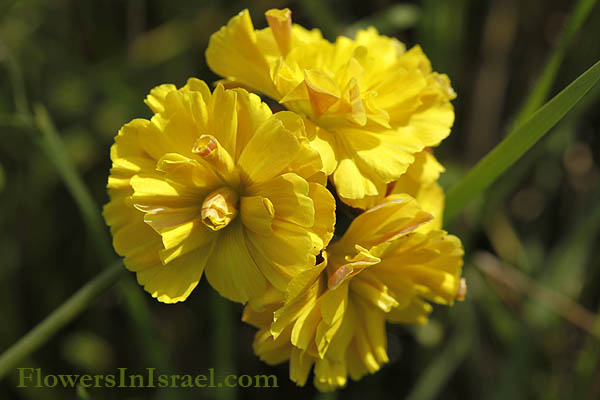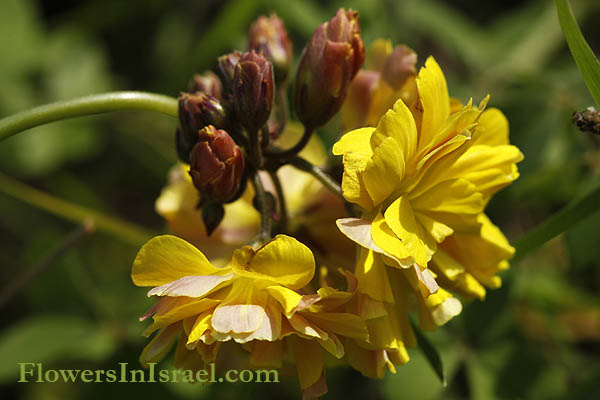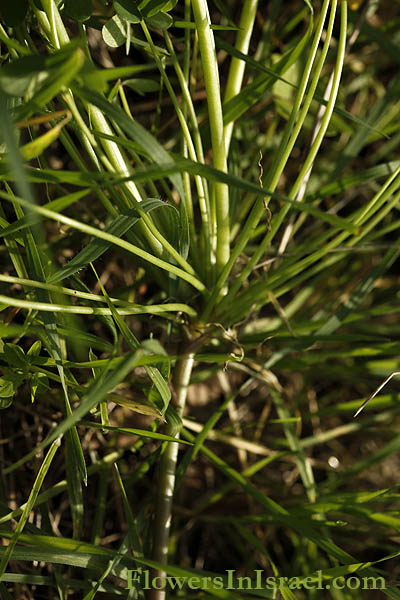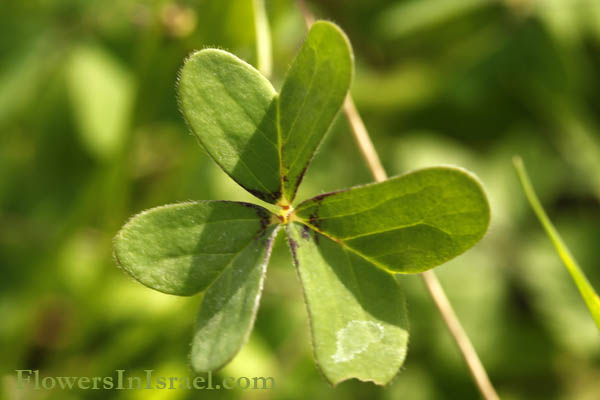Bermuda Buttercup, Cape Sorrel, African Wood-Sorrel,
Soursob, Sour Grass, חמציץ נטוי
| Scientific name: | Oxalis pes-caprae var. pleniflora L. | |
| Synonym name: | Oxalis cernua Thunb., Bolboxalis cernua Thunb. | |
| Common name: | Bermuda Buttercup, Cape Sorrel, African Wood-Sorrel, Soursob, Sour Grass | |
| Hebrew name: | חמציץ נטוי | |
| Family: | Oxalidaceae, חמציציים |

|
| Life form: | Geophyte | |
| Leaves: | Alternate, rosette, compound, trifoliate, divided into 3 round heart-shaped leaflets, arranged in a whorl with all the leaflets of roughly equal size. | |
| Flowers: | Beautiful rich yellow double flower; the buds and the upper part of the flowering stalks has a cupper brown colour. | |
| Flowering Period: | January, February, March, December | |
| Habitat: | Disturbed habitats | |
| Distribution: | Mediterranean Woodlands and Shrublands | |
| Chorotype: | Plurireginalbor-trop | |
| Summer shedding: | Ephemeral |

Derivation of the botanical name: Oxalis, Greek oxys, acid, sour, sharp; referring to the taste of the leaves and the stem; Pliny used Latin oxalis, idis, for some species of Rumex. pescaprae, pes, foot; capra, goat; foot of the goat, alluding to the shape of the leaflet. pleniflora, with double flower. The Hebrew name: חמציץ, hamzitz, coined from חמץ (with reduplication of the צ) on the analogy of the name Oxalis, which derives from Latin oxalis (= a sort of sorrel).


|